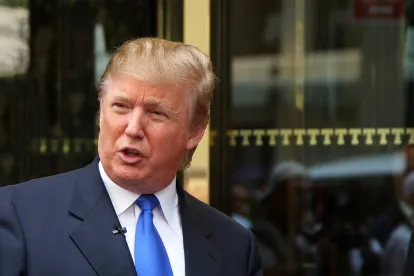On May 19, the President issued an Executive Order on Regulatory Relief to Support Economic Recovery (“EO”) in the wake of the lifting of COVID-19 shelter-in-place orders across the country. The EO directs all federal agencies to “rollback” regulations that are inhibiting economic recovery. The EO is open-ended on the timing so it could be in place for an extended period. It will undoubtedly have widespread impacts on how businesses plan and conduct operations and what their regulatory obligations will be going forward. For companies facing burdensome regulations or seeking a permit amid plummeting revenues, the EO may prove to be beneficial by providing them with an outlet for getting some regulatory relief or an expedited permit approval. For others, the EO may arrive as unwelcomed news due to the uncertainty and potential for litigation that it carries with it. In either case, our K&L Gates regulatory and policy teams can advise stakeholders on the opportunities and landmines they may face as the EO is implemented.
The EO calls on federal agencies to identify regulatory standards that “may inhibit economic recovery” and to consider taking measures to temporarily or permanently rescind, modify or waive those standards, or to exempt entities or persons from them, consistent with applicable law, and to consider exercising temporary enforcement discretion.[1] The EO also directs agencies to review those standards that are temporarily suspended, rescinded, modified or waived in response to this EO and determine which of those would further promote economic recovery if made permanent, and report such conclusions to the Administration.[2]
In the environmental context, it is not yet clear how the EO will affect regulatory or permit requirements, compliance benchmarks, or application review processes, although opportunities for modification exist under a variety of federal statutes such as the Comprehensive Environmental Response, Compensation, and Liability Act, the Clean Water Act, the Clean Water Act, the Endangered Species Act, and the National Environmental Policy Act, to name a few.
So what’s next? If the Trump Administration’s previous regulatory reform effort is a guide, EPA and other agencies will quickly get thousands of requests under the EO for regulatory relief. To help sort through the requests we expect guidance on how agencies intend to implement the EO, including the process for determining where and how regulatory and enforcement discretion may apply.[3]
In the meantime, there are a number of actions that stakeholders could request be made by agencies with authority over environmental matters to implement the EO and provide the desired regulatory relief, such as:
-
Replacing individual permit requirements with general permits and otherwise streamlining permit approvals
-
Reducing the frequency of testing and monitoring requirements
-
Extending regulatory deadlines
-
Applying presumptive waivers and variances
-
Temporarily suspending regulatory restrictions and obligations
-
Applying enforcement discretion
Environmental advocates are likely to challenge these types of agency actions, particularly on grounds that they are not “consistent with applicable law and with protection of the public health and safety” as stated in the EO. Agencies, of course, must act within the scope of their statutory authority and in compliance with statutory directives. What changes are and are not “consistent with applicable law” will be a central point of argument in litigation over modifications made pursuant to the EO.
The EO offers a potential for significant gains to the regulated community where agencies shorten or simplify permitting and approval processes. However, the devil will be in the details. And we anticipate that some of those agency reforms will likely encounter direct legal challenges or leave permittees exposed to legal challenge on an as-applied basis. Despite these limitations, the EO may open the door for distressed projects looking for temporary, and perhaps permanent regulatory relief to move forward during these difficult times triggered by the COVID-19 pandemic. We at K&L Gates stand ready to help identify the opportunities afforded by the EO while minimizing the potential downside legal risks.
NOTES
[1] EO, § 4, https://www.whitehouse.gov/presidential-actions/executive-order-regulatory-relief-support-economic-recovery/.
[2] Id. § 7.
[3] The EO states that guidance on implementing the directive from the Office of Management and Budget may be forthcoming, which may provide a road map to how the EO will be interpreted and applied.







 />i
/>i
